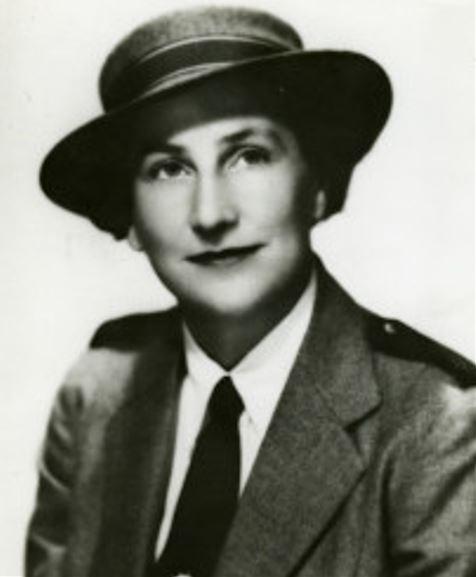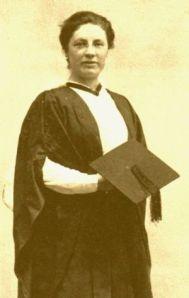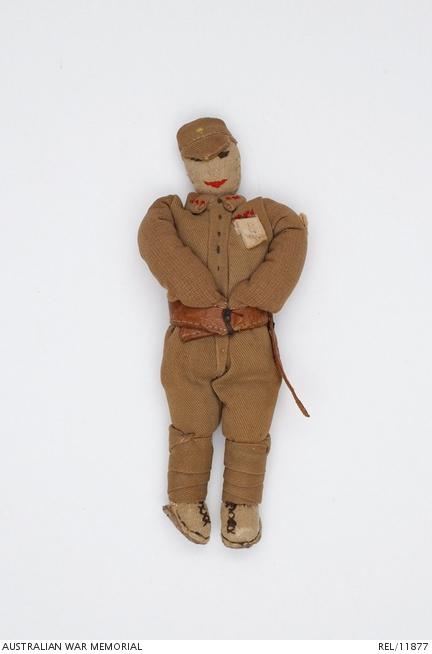'We are praying for freedom'

When Sister Betty Jeffrey stood before her fellow prisoners of war in Sumatra and started to sing, she could almost forget where she was.
“This music is quite the most wonderful thing that has happened in this camp so far,” she wrote.
“To sit on logs or stools or tables in the crude old attap-roofed kitchen, with only one light, and then to be lifted right out of that atmosphere with this music is sheer joy.
“It is so easy to forget one is a prisoner.”
An Australian Army nursing sister, Betty had been taken prisoner by the Japanese on Banka Island after being evacuated from Singapore and surviving the sinking of the Vyner Brooke.
Throughout her three and a half years of captivity, she kept a detailed diary of her experiences and treatment, using a “precious stub of pencil” and an old exercise book she managed to scrounge from a guardhouse.
At great risk to herself, she kept the diary hidden from the Japanese, knowing that if it was found, she would have been harshly punished or even killed.
The diary informed her book, White Coolies, which was first published in 1954, and was dedicated to the nurses who did not return.
The book became a bestseller in Australia and partly inspired Bruce Beresford’s 1996 film, Paradise Road, which focuses on the period when the women secretly rehearsed as a ‘vocal orchestra’, performing regular concerts for their fellow prisoners until they were too weak to continue.
Betty used this pencil to record her experiences as a prisoner of war in Sumatra.
More than 70 years later, the story of the ‘vocal orchestra’ will be told as part of the POW Requiem in Canberra on 29 October 2022.
The fourth in a series of commemorative concerts, the requiem uses powerful music and imagery to tell the stories of the men and women who were prisoners of war and internees during the Second World War.
Directed by the Australian War Memorial Musical Artist-in-Residence, Christopher Latham, as part of the Flowers of Peace project, it aims to create a deeper understanding of the prisoner of war experience while highlighting the importance of music and culture in keeping up morale.
Affectionately known as ‘Jeff’ by her colleagues, and as ‘Sister Jeff’ by the other women in the camps, Agnes Betty Jeffrey was born in Hobart, Tasmania, in May 1908.
The second youngest of six children, she preferred to be known as Betty because she decided as a child that didn’t like her first name.
When she was young, the family moved around a lot because of her father’s job. An accountant at the General Post Office, he was often transferred interstate. The family eventually settled in East Malvern in Melbourne, where Betty lived for the rest of her life.
She started her nursing training at The Alfred Hospital at the age of 29 and graduated in 1939, receiving her Midwifery Certificate from the Royal Women’s Hospital in 1940.
Informal portrait of Betty Jeffrey, right, and Vivian Bullwinkel, left, at a dedication ceremony for those who died during the war.
That same year, Betty enlisted as an Australian Army Nursing Sister, excited at the opportunity to travel and aid the war effort.
When she sailed from Melbourne in 1941 to join the 2/10th Australian General Hospital in Malacca, there was no war in the Pacific, but that all changed on 8 December, and the nurses were suddenly, in Betty’s words, “right in the thick of it”.
Early in the New Year, the nurses were evacuated to Singapore, where they converted an old Chinese school into a makeshift hospital.
Here the nurses worked tirelessly, caring for the sick and wounded, under the threat of constant danger and air raids. They were ordered to evacuate again, but refused.
“We looked like being taken prisoners at any moment, but there was not a sign of panic,” she wrote.
“We finished our meal, put on our red capes, and with small weekend suitcases, greatcoats and hats walked from our quarters to the main hospital and got on with the job.
“Everyone wanted to stay and carry on.
“We were flat out receiving wounded, and still more wounded, while the bombing and noise went on and on.”
“We all flatly refused to go.
“But our refusal was useless.
“We were ordered to leave and had to walk out on those superb fellows.
“I have never felt worse about anything. This was the work we had gone overseas to do.”
Donning their red capes, and taking only what they could carry, Betty and 64 of her nursing colleagues made their way to the wharf where they boarded the small steamer ship, Vyner Brooke, along with 300 civilians and soldiers.
“Singapore seemed to be ablaze,” she wrote. “There were fires burning everywhere behind and around us and on the wharf hundreds of people trying to get away.”
A fierce air raid was raging, and the nurses hoped it would be the end of the danger. But it proved to be just the beginning.
Two days out of Singapore, the Vyner Brooke was attacked and sunk by Japanese aircraft.
“We were just about lifted out of the water,” she wrote.
“The little ship shuddered and rattled. There was a terrific bang, and after that she was still ...
“A bomb hit the bridge. Another went straight down the funnel.
“[But] down the planes came again, and what a crash!
“It felt as if the bomb had landed right in the room with us.
“Then shattering glass, tons of it, smoke, and the sounds of crashing walls.”
The nurses worked to ensure everyone was safely off the ship before abandoning it themselves.
“Believe me, we didn’t waste time getting them overboard!” she wrote.
“Nobody was anxious to linger on a burning and rapidly sinking ship.
“But the planes had not finished with us. Over they came again and machine-gunned the deck and all the lifeboats.”
Matron Olive Paschke and a number of nurses of the 2/10th Australian General Hospital.
Desperate, Betty slipped down a rope, and watched hopelessly as the Vyner Brooke disappeared under the waves.
Matron Paschke called out, ‘We’ll all meet on the shore, girls, and get teed up again.”
But the nurses never saw her again.
Of the 53 survivors who made it to shore on nearby Banka Island, 21 were murdered and the remaining 32 were taken prisoner.
Betty would spend the next three days in the water, swimming in the sea and the mangrove swamps with her companion, Matron Iole Harper. They had been in the water together for 28 hours, when they realised they didn’t know each other’s names and stopped to formally introduce themselves. They were eventually pulled from the water, exhausted and delirious, by Malay fishermen who took them to their village on Japanese-held Banka Island to feed and care for them.
They were taken prisoner soon after, but were relieved to be reunited with their fellow nursing sisters from the Vyner Brooke. Unbeknown to them, 12 of their colleagues, including Matron Paschke, had been lost at sea. They learnt the fate of the remaining 22 when their friend Vivian Bullwinkel arrived, tired and alone, a few days later. She had been one of the nurses who had made it ashore at Radji Beach with a number of civilians and soldiers and had decided to surrender. When the Japanese arrived, they shot or bayoneted the men and forced the nurses to wade into the sea, where they machine-gunned them from behind. There were only two survivors, Vivian, and a wounded British private, Cecil Kinsley. Vivian had been struck by a bullet and had pretended to be dead until the Japanese left. She hid in the jungle for 12 days, where she nursed Kinsley and kept him alive, before deciding to surrender once more. Kinsley died a few days later.
After hearing Vivian’s story, the nurses made a pact never to mention it again.
Former prisoners of war on board the hospital ship Manunda on its arrival in Australia.
The women would be held prisoner in and around Sumatra for the next three and a half years. They lived in appalling conditions on a diet of bug-ridden rice and rotten vegetables. As punishment, the women, already weak from starvation and illness, were forced to stand for long periods in the hot sun. Others had to walk for hours to collect clean water for the guards’ sweet potato crops, while they themselves were forced to drink water that was often putrid and contaminated. Red Cross parcels containing food and medical supplies were kept from them and fresh food was consistently left to rot in the sun and rain before being given to them.
It was in the camp at Palembang that Betty first met the Englishwoman, singer and composer Norah Chambers.
Chambers had attended the Royal Academy in London and conducted an “orchestra” of human voices, which she hoped would transport both the singers and their audience beyond the confines of the camp and give them the strength to survive.
Presbyterian missionary Margaret Dryburgh wrote out some 30 pieces of classical music from memory on scraps of paper that she scrounged or found. Her own compositions included the Captive’s Hymn, which the women and children sung each Sunday during church services.
“Norah Chambers conducts her ‘orchestra’ in the Dutch kitchen at night,” Betty wrote.
“I have been a keen listener for a long time, but now I am a member of the orchestra. It is absolutely marvellous, the most fascinating thing I have ever done.”

Norah Chambers circa 1925.
There were no musical instruments, but about 20 women who hummed or crooned.
“The orchestra is divided into firsts, second, thirds and fourths, and all practise during the day in their four separate groups,” she wrote.
“On practice nights they all come together and are conducted by Norah.
“The music is written out on any kind of paper obtainable; each person has her own copy, all being copies from Miss Dryburgh’s hand-made original.
“It was a glorious concert, we had never heard anything like it before.”
Their repertoire included Dvorak’s New World Symphony, Beethoven’s Moonlight Sonata and Mendelssohn’s Song without Words.
Even the Japanese guards were amazed at what they heard.
“Norah must beg permission to sing from the guard on duty,” she wrote.
“He wants to know why we can sing while our people are being killed.”
The concerts eventually ceased as the women became too weak and many died.
“Couldn’t write about this period,” Betty wrote.
“It has been too awful, one or two funerals every day and so many young people are dying ...
“There is nothing pleasant to write about. Camp life is just an existence now.
“No more concerts or charades or sing-songs, when the day’s work is done people go off to their beds and lie there until morning ...
“We are praying for our freedom.
“If this doesn’t happen soon, we shall be a mess for the rest of our lives.”

Margaret Dryburgh in 1911.
Dryburgh died, shortly after moving to a new camp in April 1945.
“Miss Dryburgh’s death has caused much sadness throughout the whole camp,” Betty wrote.
“What a wonderful person she was, and how hard she worked to give the people in the camp such pleasure!”
A month later, the Japanese held their own concert.
“The Japanese military band was a huge success,” Betty wrote.
“We were amazed at what we saw. There were about thirty Japanese all dressed alike ... and their expressions were entirely different. There was no sign of hatred on their faces at all.
“They were simply men who loved good music and played it well.
“Most of us wanted to howl [with tears] when the music started...
“For two hours, we all forgot we were prisoners.”
By the time they were liberated in late 1945, Betty weighed just 32 kilos.
“Hell has turned into heaven almost overnight,” she wrote.
“To see that rising sun badge on a beret again! It did us more good than anything we have experienced so far.”
Of the 65 servicewomen who had embarked on the Vyner Brooke in Singapore, only 24, including Betty Jeffrey and her friend Vivian Bullwinkel, returned to Australia. Of the 32 taken prisoner, eight had died in captivity.
Jean Keer (Jenny) Greer and Betty Jeffrey recovering from malnutrition in hospital.
When Betty arrived home in Melbourne in October 1945, she was hospitalised with tuberculosis for much of the next two years.
When she was discharged, Betty toured Victoria in a little Austin car with Vivian Bullwinkel to raise funds for a “living memorial” to the nurses who had died during the war.
The Nurses Memorial Centre opened in St Kilda Road, Melbourne, on 14 May 1949 – Betty’s birthday.
Betty became its first director.
She donated her diary to the Australian War Memorial after the war, along with drawings and paintings from the camp. She also donated a cloth doll representing a Japanese guard the women had nick-named ‘Bully’. The doll was a birthday present and was made in the camp from a shirt tail stolen from a Japanese soldier.
Betty later wrote, “You forget nothing, not a thing, from years like those.”
This doll was made to represent a Japanese guard nick-named 'Bully' . It was made as a present for Betty's birthday.
Betty joined the Victorian Branch of the Ex-Prisoner of War and Relatives Association after the war, and worked for her fellow ex-prisoners of war for the rest of her life.
She was awarded the Medal of the Order of Australia in 1987 and was made a life member the Returned Services League. She died on 13 September 2000 at the age of 92.
Her close friend, Wilma Oram Young, a fellow survivor, spoke at her memorial service in Melbourne.
The pair had been in different hospital units in Malaya and had met on the Vyner Brooke as they were being evacuated from Singapore.
“We have lost a gifted and sincere friend,” she said.
“Betty’s wonderful sense of humour and her adjustment to our situation helped us all.
“She was ever helpful and inspiring – full of fun when things were grim.
“Betty was a much loved and valued member of our camp life and a true friend.”
The POW Requiem is on Saturday 29 October 2022, from 1 pm to 4.15 pm at Llewellyn Hall at the Australian National University in Canberra. For more information visit: flowersofpeace.com.au







